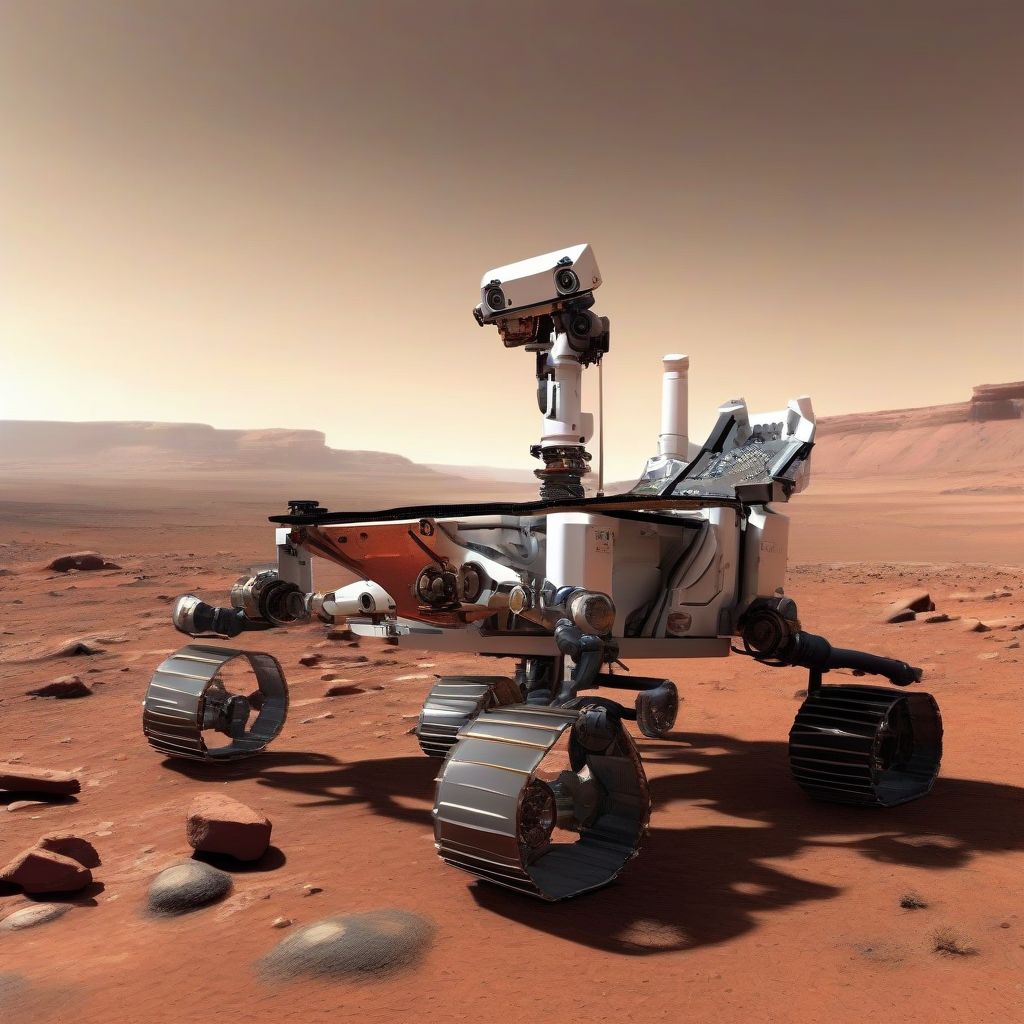Have you ever dreamt of venturing into the vast expanse of space? For centuries, humans have gazed at the stars, wondering about the mysteries they hold. While manned missions have achieved incredible feats, the future of space exploration increasingly relies on our robotic companions. These sophisticated machines are pushing the boundaries of our knowledge, venturing into harsh environments where humans cannot yet tread, and paving the way for future discoveries. Let’s explore how robotics are advancing space exploration missions and reshaping our understanding of the cosmos.
The Expanding Role of Robotics in Space
From the earliest probes sent to other planets to the sophisticated rovers traversing Mars today, robotics have become indispensable tools for space exploration. Their ability to withstand extreme temperatures, radiation, and other hazards makes them ideal for gathering data and performing tasks in environments too hostile for human life. But their role extends far beyond simply surviving; they are transforming how we explore.
Gathering Data and Scientific Discovery
Robotic missions gather crucial scientific data about the composition of planets, moons, and other celestial bodies. They analyze soil samples, study atmospheric conditions, and search for signs of past or present life. For instance, the Curiosity rover on Mars has provided invaluable insights into the planet’s geological history and the potential for habitability.
Enabling Human Exploration
Robotic missions often serve as precursors to human exploration. They scout landing sites, assess potential hazards, and even deploy infrastructure in preparation for future manned missions. This robotic groundwork minimizes risks and maximizes the efficiency of human expeditions. Imagine robots constructing habitats or setting up communication systems before astronauts arrive, creating a safe and functional environment for human exploration. “Robotics are essentially our eyes and ears in space, allowing us to prepare for future human presence,” says Dr. Eleanor Arroway, a fictional expert on space exploration in Carl Sagan’s Contact. This sentiment highlights the crucial role robots play in extending our reach beyond Earth.
Exploring Extreme Environments
Robotics allow us to explore environments deemed too dangerous or inaccessible for humans. Think of exploring the intense radiation belts of Jupiter or venturing into the deep craters of the moon. Robotic probes can withstand these extreme conditions, gathering valuable data and expanding our knowledge of the universe without putting human lives at risk.
 Robotic Arm Collecting Soil Sample on Mars
Robotic Arm Collecting Soil Sample on Mars
Types of Robots in Space Exploration
A variety of robotic systems contribute to space exploration, each designed for specific tasks and environments:
Rovers
Mobile robots like the Perseverance and Curiosity rovers on Mars traverse planetary surfaces, collecting samples, conducting experiments, and sending back images and data. They are equipped with sophisticated instruments, allowing them to analyze the environment and search for signs of life.
Orbiters
Orbiters circle planets and moons, providing a global perspective. They capture high-resolution images, map terrain, study atmospheric conditions, and relay communication signals between rovers and Earth.
Landers
Landers are designed to touch down on the surface of a celestial body and conduct experiments or deploy other robotic systems like rovers. They often carry instruments to analyze the surface composition and study the environment.
Probes
Probes are spacecraft sent to fly by or orbit planets, moons, or other celestial bodies, collecting data about their composition, atmosphere, and magnetic fields. Voyager 1 and 2 are prime examples of probes that have ventured beyond our solar system, providing invaluable data about the interstellar medium.
Telescopes
Space-based telescopes like Hubble and James Webb provide unobstructed views of the universe, capturing stunning images and gathering data about distant galaxies, stars, and planets. Their observations have revolutionized our understanding of the cosmos.
The Future of Robotics in Space Exploration
The future of space exploration is inextricably linked to the advancement of robotics. As robotic technology continues to evolve, we can expect even more ambitious missions and groundbreaking discoveries.
Artificial Intelligence and Autonomy
Integrating artificial intelligence (AI) into robotic systems will allow them to operate more autonomously, making decisions and adapting to unexpected situations without constant human intervention. This is crucial for missions to distant destinations where communication delays can be significant.
Swarm Robotics
Imagine fleets of small, interconnected robots working together to explore a vast area or construct complex structures in space. Swarm robotics holds immense potential for future missions, allowing for increased efficiency and adaptability.
Advanced Materials and Manufacturing
The development of new materials and manufacturing techniques will lead to more robust and versatile robots capable of withstanding even harsher environments and performing more complex tasks.
Human-Robot Collaboration
Future missions are likely to involve closer collaboration between humans and robots, combining the strengths of both. Robots could perform dangerous or repetitive tasks, freeing up astronauts to focus on scientific research and exploration. “The synergy between humans and robots is where the true potential of space exploration lies,” notes a prominent robotics engineer in a recent interview. This partnership is essential for tackling the complex challenges of long-duration space missions.
Conclusion
Robotics have become integral to space exploration, allowing us to reach beyond our physical limitations and delve deeper into the mysteries of the universe. From gathering scientific data to paving the way for human exploration, these sophisticated machines are pushing the boundaries of our knowledge and driving us toward a future where the cosmos becomes more accessible than ever before. As technology continues to advance, we can expect even more innovative applications of robotics in space, leading to groundbreaking discoveries and a deeper understanding of our place in the vast expanse of the universe. What are your thoughts on the future of robotics in space? Share your ideas in the comments below, and let’s continue this exciting conversation together. Don’t forget to share this article with fellow space enthusiasts and explore the related content on our website for more fascinating insights into the world of space exploration. You can find more information about international space agency collaboration on this page: https://spaceexplorationupdates.org/how-international-space-agencies-collaborate-on-missions/



